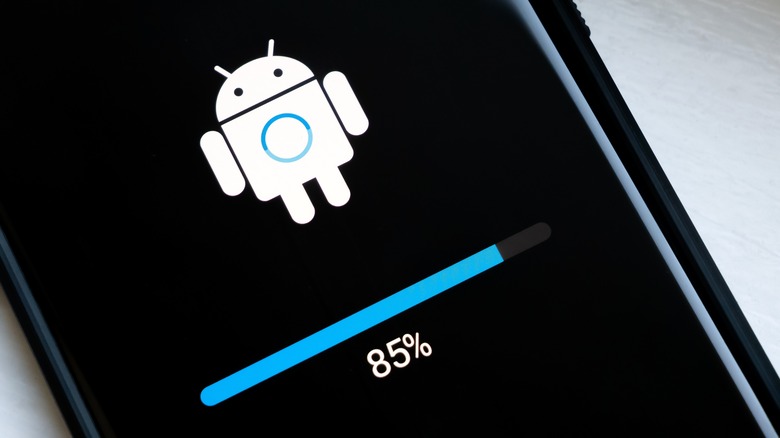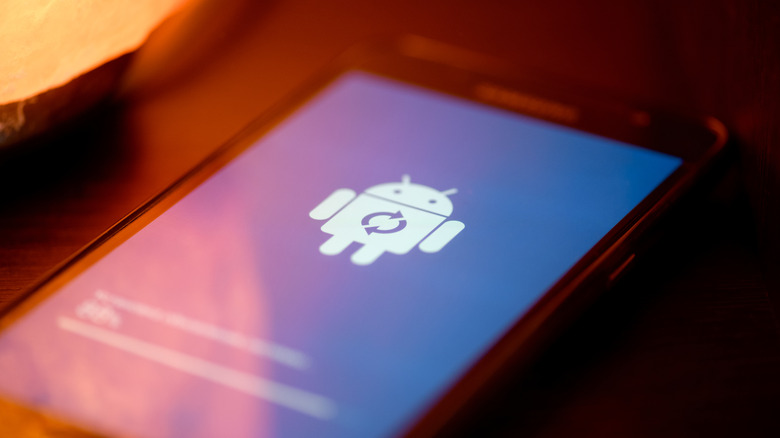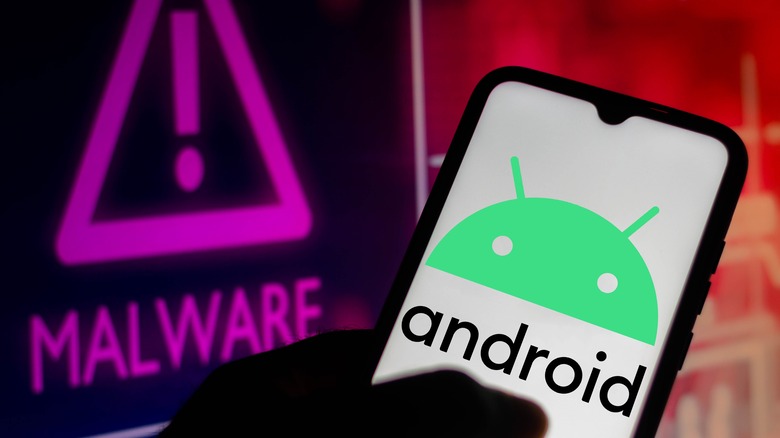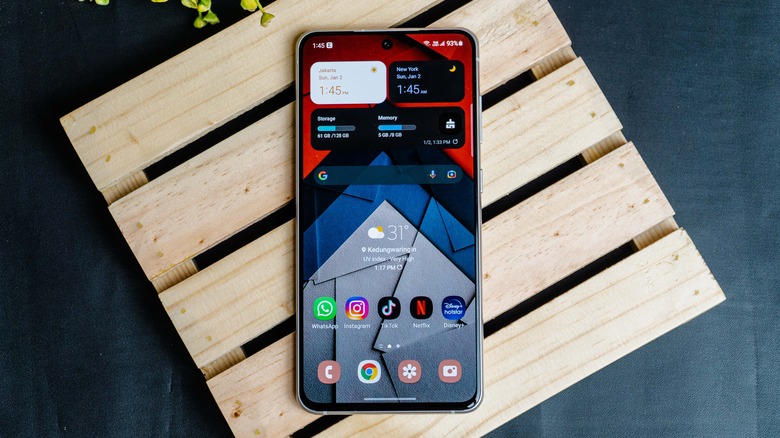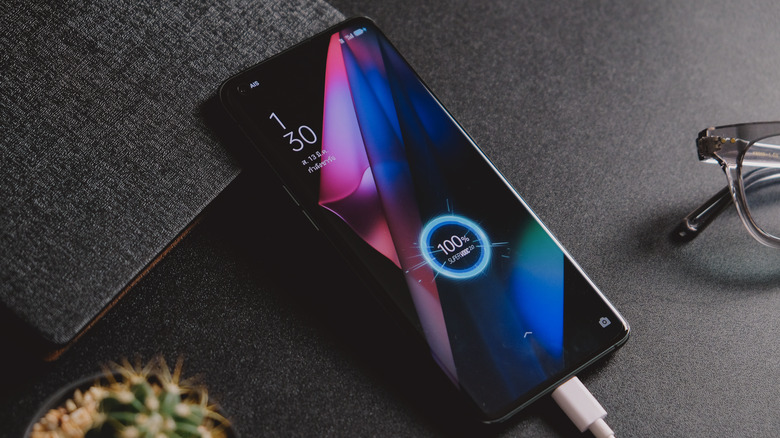Here's What Actually Happens When You Don't Update Your Android Phone
There's more than one way of caring for your pricey Android phone, and the mighty computer in your pocket needs more than just a case to protect it from bumps and scratches. That's where software updates come into the picture as they offer protection for your precious data, fix functional bugs, and improve performance, among other things. In a nutshell, don't ignore those notifications telling you about a new software update.
But when it comes to paying attention, the stakes are higher in the case of Android phones. That's because in addition to OS-level updates offered by Google, smartphone makers need to make their own set of changes based on the available hardware and custom software tweaks to handle a lot of responsibilities. If your phone has been acting weird lately, some functions suddenly appear broken, battery life has taken a hit, there are connectivity issues, or it just gets toasty while doing the most basic tasks, you better pay attention to those software update alerts, as they could very well solve all of your phone problems.
Missing out on new features
One of the biggest advantages of jumping on the latest software update is the availability of new features and experiences. If it's the yearly Android OS upgrades like the upcoming Android 13 update, then you get the whole package with a fresh UI design, new customization tools, more refined privacy systems, and, of course, a ton of new features to play with.
If you happen to be rocking one of Google's Pixel smartphones, then the regular Pixel Feature Drops are worth looking out for. These drops introduce a healthy number of features. For example, the June 2022 feature drop added a pocket operator for Pixel that allows users to shoot videos and turn them into fun clips using sound layers, visual effects, beats, and mixing effects. The update also added a way to add vaccination certificates straight from the home screen alongside a conversation mode in the Sound Amplifier app to assist people with hearing disabilities.
Finally, there are updates rolled out by OEMs for their custom Android skins like Samsung and its OneUI or the OxygenOS experience available on OnePlus phones. These brands follow their own update cadence with unique version numbers, delivering new features, UI changes, and general performance enhancements with each new software build they roll out.
A phone vulnerable to attacks
Most Android phone users often face a dilemma when it comes to updating their phones, worrying that the latest software update might break a few things. The concerns are not unfounded, but they do take a backseat when an update also brings a security patch with it. Now, all security patches are not necessarily cardinal, but those that fix a vulnerability labeled as severe or critical should be downloaded and installed as soon as possible.
One of the most common types of vulnerabilities that smartphone makers patch on a regular basis allows remote code execution. In simple terms, a bad actor can remotely execute a command on a phone and gain access to critical systems. Then there are vulnerabilities that allow a hacker to steal data or gain complete control of a device. A critical security vulnerability can also allow a hacker to install malware, which can do a lot of damage — it can either be exploited for ransomware or used by bad actors for surveillance.
Apple actually issued an iOS update last year that fixed a vulnerability exploited by NSO Group to plant the Pegasus spyware on an unsuspecting person's phone. Android devices are more vulnerable than those running iOS, so the security updates should be taken more seriously. According to Kaspersky, 98% of mobile banking attacks are launched against Android devices. And given the open-source nature of Android, Norton also notes that Android is more prone to security-related incidents.
Performance woes and bugs galore
There are two ways in which a software update affects how your phone works: it can either fix existing performance issues or further enhance the experience. Issuing a major Android update is no small feat, and there is always a chance that a few bugs can severely cause an app to malfunction. The random crashing of an app, abnormally high battery usage, and heating are just some of the most common performance troubles caused by bugs.
Companies often roll out corrective updates to iron out these issues. For that reason, sitting on a minor software update following a major update that has taken its toll on day-to-day usage is probably a bad idea. Take, for example, the Magic Eraser feature that is available in the Google Photos app for Pixel smartphones. An incorrect update rolled out by Google caused the feature to vanish, prompting the company to pull it. After recognizing the mistake, Google fixed it with a corrective update.
On a general note, if a major update is rolled out in a rush without proper optimization and quality testing, it's the users who suffer the most. While it shouldn't happen in the first place, it is worth keeping in mind that new software updates usually fix the problems introduced by the previous version that introduced major changes.
A few tips to avoid hiccups
Updates can be a finicky thing, but the pros far outweigh the cons. However, it's always a good idea to take a few precautions. Before installing an Android update, especially those that are a few hundred megabytes in size, make sure that your phone is connected to a Wi-Fi network. That way, the installation is quicker and you don't take a hit on the cellular data allowance.
Next, make sure that the battery is fully charged so that your phone doesn't die midway during the file download, or worse, in the midst of installation. If you have important data on your phone like banking information, crucial files, and sensitive media, make sure to back them up locally on another device or save them to a cloud drive, just to ensure that if something goes wrong with the update, your important files are safe and can be recovered.
It's always a good idea to monitor official community forums or subreddits like R/Android to keep an eye on the latest developments. Enthusiastic users often share their experiences after downloading an update. If user reports indicate the update is riddled with issues, avoid it and wait until a correct version is released. And if you're facing any issues after installing an update, there's a high chance that you'll find a solution in these threads and communities for at least some of the problems.
